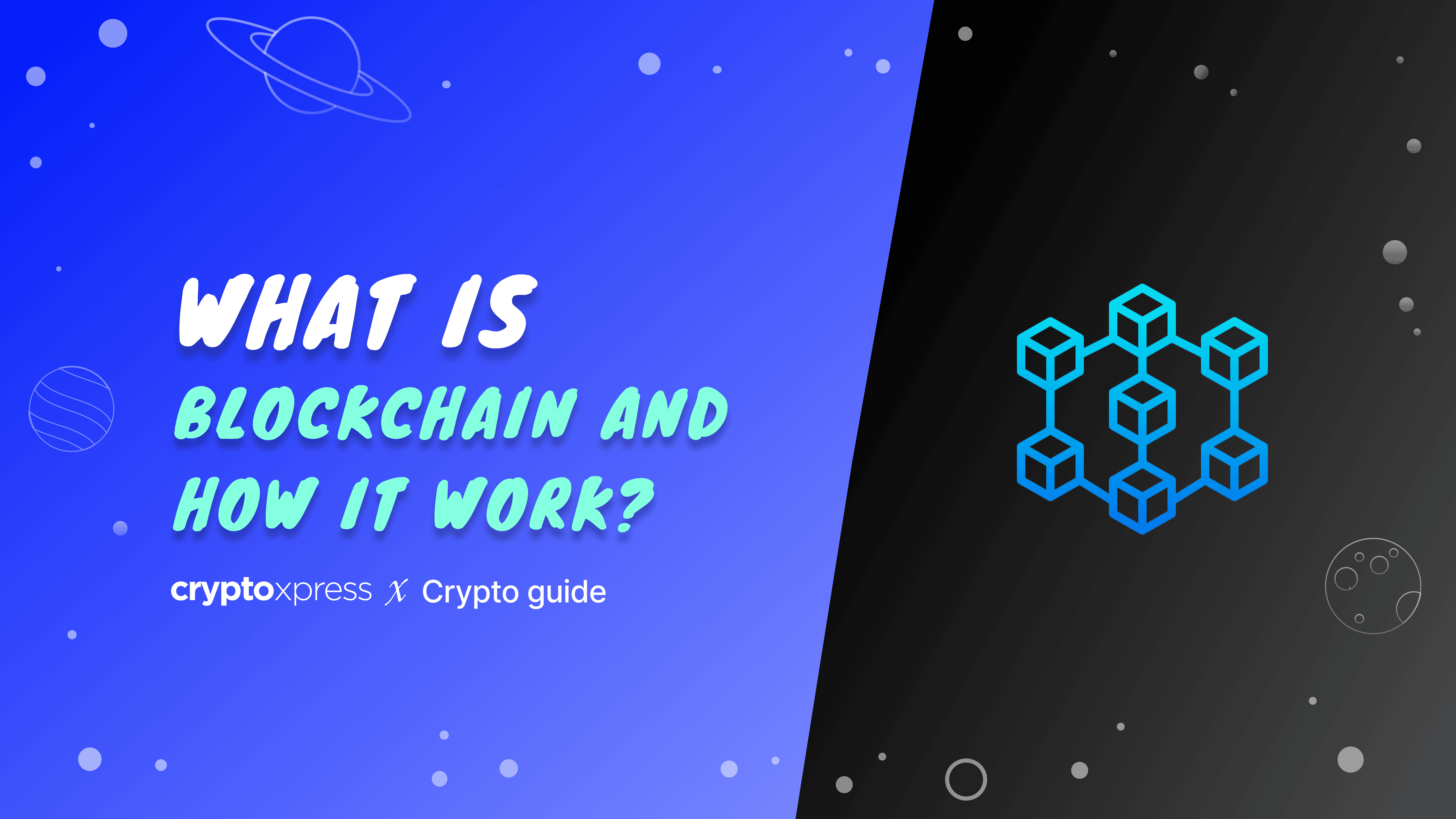|
Getting your Trinity Audio player ready...
|
In recent years, the concept of blockchain has emerged as a revolution, reshaping the way we perceive and handle information. From cryptocurrency to supply chain management, blockchain technology has found applications in various industries. In this blog post, we will unravel the mysteries of blockchain, exploring what it is and how it works.
What is a Blockchain?
In this digital era, where data reigns everything, blockchain emerges as a revolutionary concept that transcends the traditional boundaries of information management. At its core, a blockchain is a decentralized and distributed ledger aka. a digital record-keeping system that encapsulates the essence of transparency, security, and collaboration.
Unlike conventional centralized databases, where a single authority governs and controls access, blockchain operates on a peer-to-peer network. This network comprises multiple participants, known as nodes, each equipped with a copy of the complete blockchain. This decentralized architecture ensures that no single entity has absolute control, promoting a system where power is distributed and decision-making is collaborative.
The foundational principle of a blockchain is to record transactions across a network of computers in a secure and transparent manner. Each transaction is encapsulated within a block, and these blocks are linked together in chronological order, creating a chain of interconnected data – the blockchain itself. The distributed nature of this ledger is pivotal, as it eliminates the vulnerabilities associated with a centralized point of control, mitigating the risks of fraud, manipulation, and unauthorized alterations.
In the realm of blockchain, transparency is not merely a buzzword but a fundamental characteristic. Every participant in the network has access to the entire transaction history, fostering trust and accountability. This transparency is reinforced by the cryptographic elements woven into the fabric of blockchain technology.
As a participant in the network, each entity possesses a unique pair of cryptographic keys – a public key, shared openly with others, and a private key, kept confidential. These keys serve as the mechanism for securing and authenticating transactions. When a transaction is initiated, it is signed with the private key, providing a digital signature that validates its authenticity. The public key, in turn, acts as an address to which others can send cryptocurrency or verify the integrity of the transaction.
The immutability of blockchain is another cornerstone feature. Once a block is added to the chain, altering any piece of information within it would necessitate changing the hash of that block and all subsequent blocks. Given the computational power required and the decentralized nature of the network, this becomes a virtually insurmountable task, ensuring that the historical record remains tamper-resistant and trustworthy.
In essence, a blockchain represents more than just a database; it embodies a paradigm shift in the way we conceive, record, and trust information. Its decentralized architecture, transparency, cryptographic security, and immutability make it a potent tool with applications ranging from financial transactions, supply chain management, healthcare records, and beyond. As we navigate the complexities of the digital landscape, the blockchain stands as a beacon, illuminating the path to a future where trust, security, and collaboration converge in a decentralized, transparent, and resilient network.
How Does a Blockchain Work?
1. Decentralization: The Power of Distributed Networks
Blockchain’s decentralized nature is its defining feature. In a traditional system, a central authority, such as a bank or government, oversees and validates transactions. In contrast, blockchain operates on a network of nodes, each maintaining a copy of the entire transaction history. These nodes work collaboratively to validate and record transactions without the need for a central entity. Decentralization enhances security by removing single points of failure and reduces the risk of manipulation or corruption.
2. Blocks and Transactions: Building the Chain
Blockchain organizes transactions into blocks, creating a chain of interconnected data. Each block contains a set of transactions, a timestamp indicating when the block was created, and a reference to the previous block in the chain. This linking of blocks forms the backbone of the blockchain, ensuring a chronological and transparent record of transactions. The process of adding a block to the chain is known as “mining” in Proof of Work systems.
3. Consensus Mechanism: Ensuring Agreement
Maintaining the integrity of the blockchain relies on a consensus mechanism – a set of rules that all nodes in the network must adhere to. This mechanism ensures that all nodes agree on the validity of transactions and the order in which they are added to the blockchain. Two widely used consensus mechanisms are Proof of Work (PoW) and Proof of Stake (PoS). PoW involves solving complex mathematical problems to validate transactions and add blocks, while PoS assigns the right to validate transactions based on the amount of cryptocurrency a participant holds.
4. Cryptography: Securing Transactions
Cryptography is a fundamental element of blockchain, providing a robust layer of security. Each participant in the network possesses a pair of cryptographic keys – a public key and a private key. The public key is openly shared and serves as an address to which others can send cryptocurrency. The private key, known only to the owner, is used to sign transactions, ensuring that they are authentic and have not been tampered with. This cryptographic process guarantees the security and integrity of the entire blockchain network.
5. Immutability: Tamper-Resistant Transactions
Once a block is added to the blockchain, it becomes nearly impossible to alter. The immutability of the blockchain is a result of its decentralized nature and the cryptographic hash functions used. Changing the information in a block would require recalculating the hash of that block and all subsequent blocks – a computationally infeasible task due to the distributed nature of the network. This immutability provides a high level of trust, making blockchain an ideal solution for recording and verifying sensitive information.
6. Chaining Blocks Together: Creating a Secure and Chronological Ledger
As transactions accumulate and fill a block, the information undergoes a crucial process before being added to the blockchain. The data within the block is run through an encryption algorithm, generating a unique hexadecimal number known as the hash. This hash serves as a digital fingerprint for the block, uniquely identifying its content.
7. Hashing and the Block Header: Enhancing Security
The hash generated for a block is not only unique to that block but also dependent on the information within it. Even a minor alteration in the data would result in a completely different hash. This cryptographic property enhances the security of the blockchain, making it resistant to tampering.
The hash is then incorporated into the next block along with other details, such as the timestamp, transaction data, and a reference to the previous block’s hash. This compilation forms the block header. As each new block is added, it refers to the hash of the preceding block, creating a continuous and unbroken chain of blocks.
8. Distributed Nature: Multiple Copies for Consensus
One of the key strengths of a blockchain is its distributed nature. Copies of the entire blockchain exist on numerous machines (nodes) across the network. For a transaction to be considered valid and added to the blockchain, a consensus among these nodes is required. Each node independently verifies and validates the transactions, ensuring that all copies of the blockchain remain in sync. This decentralized consensus mechanism eliminates the need for a central authority, enhancing security and transparency.
9. Mining and Proof of Work: Securing the Network
In blockchain networks that use Proof of Work (PoW) as their consensus mechanism, the process of adding a new block, known as mining, involves solving complex mathematical problems. This computational effort serves two purposes: it validates transactions and adds a new block to the chain. Miners compete to solve these problems, and the first one to succeed broadcasts the solution to the network. Other nodes then verify the solution before accepting the new block. This process not only secures the network but also introduces new cryptocurrency units as a reward for the successful miner.
Conclusion
In conclusion, the intricate workings of blockchain technology provide a groundbreaking solution to the challenges of our digital age. By decentralizing control, securing transactions through cryptography, and ensuring consensus among distributed nodes, blockchain has created a new paradigm for trust and transparency. The immutability of the ledger, coupled with the innovative chaining of blocks, establishes an unassailable record of transactions.
As we continue to witness the evolution of blockchain, its transformative potential becomes increasingly evident. Beyond cryptocurrencies, blockchain is reshaping industries, from finance to healthcare, by offering a secure and tamper-resistant infrastructure. The decentralized nature of blockchain not only mitigates the risks associated with centralized control but also opens doors to novel applications, revolutionizing the way we exchange value and information.
The journey through the decentralized realm of blockchain has uncovered a landscape of innovation, where trust is not placed in a single entity but distributed across a network of participants. The collaborative efforts of nodes, the cryptographic security, and the consensus mechanisms together form the backbone of this revolutionary technology.
In embracing blockchain, we embark on a path toward a future where transparency, security, and efficiency converge. The decentralized ledger, with its robust features and versatile applications, holds the promise of unlocking new possibilities and reshaping industries in ways we are only beginning to comprehend. As we navigate this digital frontier, one thing is certain – the impact of blockchain will continue to unfold, reshaping our world and empowering us with a decentralized, transparent, and secure foundation for the digital age.






